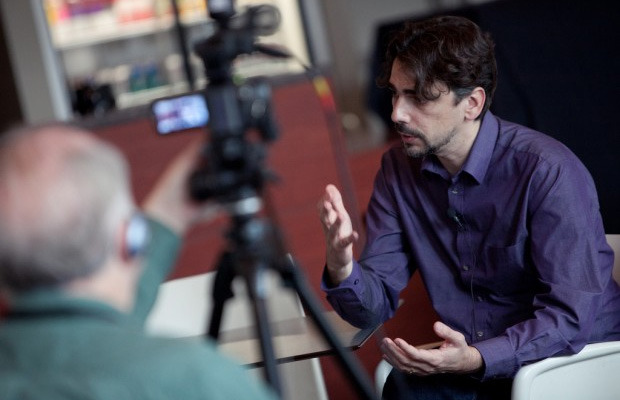3 Tips For Boosting Your Content With Expert Interviews

Telling your own or someone else’s story is one of the easiest, yet most effective ways to create content that spreads because you are no longer alone promoting it. Whenever there’s another person or other people involved, they will be interested in sharing that article as well. Besides, the blog always looks more trustworthy when there are known niche experts taking part in its life.
While I love reading expert interviews and I always see great results when publishing interviews on my own blogs, this type of content has been over-used recently. Here are my best practices for making the most of this powerful content strategy.
1. Ask controversial questions to stand out
Taking an opposite stance can often elicit some exceptional answers from the experts. Think about what is going to be in the mind of the reader or viewer. What questions do they want answered? What’s not being said?
Steve Counsell told me an interesting story of how an open question can help to lead the discussion in a most interesting way.
“I’ve just done four video interviews for a UK solicitor based in Worthing, Sussex, focusing on the Court of Protection,” he said. “I started off asking ‘what is the Court of Protection?’. No one had expected that to be asked and it lead through to a whole raft of other questions and some great answers, too.”
A fairly standard approach would be to ask the classic “five w’s” taught in basic journalism courses — who, what, where, when, why (you can throw in “how” for good measure). For examples:
“What’s so good about …”
“Why do people need to …”
“When is the best time / Worst time to use…”
“Is location important for …”
“Who uses ….”
Notice that they’re all open questions that pretty much require the interviewee to respond in a more expansive way rather than a simple yes or no.
2. Get into the flow by setting up a well-defined process
Turning an expert interview into a tradition your readers will look forward to is a great idea. Think about branding it the way your column will be well recognizable in the industry. For example, “Smarty Expert Friday” would be a neat way to play on my brand name.
Keeping yourself organized is essential to sticking to that tradition. I’ve seen some bloggers organize the process very well:
Gill Andrews doesn’t believe in scheduling voice interviews with experts, many of whom are not comfortable speaking. Plus, text or email interviews are easier to scale. Gill’s interviewees usually collaborate with her within a document shared on Google Drive. Where she posts questions, the interviews adds answers and then can collaborate editing the article without too much email back and forth. One of my personal favorite things about Google Drive is that the docs let you post and resolve comments. Both parties can cooperate very effectively.
The editors from First Site Guide have set up a very cool Google Drive form which they send to all contributors to collect their info, basic details, etc. I also think the guide itself is the perfect example of how creatively you can utilize expert contributions to build in depth, evergreen and trustworthy content.
Deborah Anderson uses video interviews and she has found a great way to scale those as well: She uses vcita calendar, with automated processing of appointments. That way, she sends two links to her Social Web Cafe TV interviewees: One is the set-up call (very important for on-air interviews, to help identify ways to fix lighting and sound without additional expenditure by the interviewee) and the other is the actual interview.
Within the system, she sends the interview questions ahead of time, so they are right there in the same system as the calendar. That way, it is easy for the interviewer and interviewee to find the questions when it is time.
3. Don’t overuse
Avoid publishing blog interviews too often. There are quite a few successful examples of blogs that contain nothing but interviews, but unless you want to build one, think of expert interviews as a way to diversify your content but without overwhelming it. A semi-active blog can schedule a monthly expert interview without it losing its own voice.













 © 2024
© 2024
0 comments